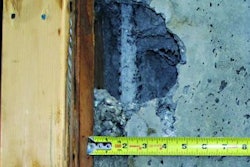SANTA FE, N.M. /PRNewswire-USNewswire/ -- An independent analysis conducted by Architecture 2030, and released in a Fact Sheet, illustrates that the President's Better Buildings Initiative (BBI) can put the nation's commercial real estate (CRE) market on the road to recovery, creating at least 300,000 new U.S. jobs and boosting tax revenue to begin putting money back into federal, state, and local coffers.
Even amidst guarded optimism as the unemployment rate fell to 8.9% in February, the nation's ongoing CRE crisis continues to threaten the recovery. $1.4 trillion in CRE loans will become due between now and 2014 (half of which are underwater) and commercial vacancy rates show little sign of improvement.
According to industry experts, a confluence of factors affecting the CRE market - high vacancy rates and cautious lending - is tipping the scales against construction employment and overall job growth. February's U.S. Bureau of Labor Statistics report illustrates that the construction unemployment rate (21.8%) is still over twice the national average, with apparent gains explained away by a bounce-back from losses due to severe weather in January.
The Administration's BBI plan, unveiled early last month, spurs CRE recovery by leveraging a commercial building efficiency tax credit of $.60 to $1.80 per square foot for meeting energy reductions of 20% to 50% below the ASHRAE 90.1-2004 standard.
Architecture 2030 reports that for each $1 billion in BBI commercial building efficiency tax credits, the program will generate $16.4 billion in new private spending and $3.6 billion in new federal tax revenue.
The program will not only pay for itself, but also reduce deficit spending by $2.6 billion. Additionally, each $1 billion in CRE tax credits would:
Create 303,551 jobs*, quickly and cost effectively,Increase after-tax cash flow and property values,Reduce loan defaults,Increase CRE desirability and investment value,Increase new CRE sales (by narrowing the gap between the bid and ask price of CRE property),Bring ESCo's and A/E/C firms into the CRE market,Decrease building energy consumption, greenhouse gas emissions, and operating costs,Generate $1.2 billion in much needed state and local government tax revenue, andGenerate $4.8 billion in total tax revenue before the $1 billion tax credit is given.
Although commercial buildings are often thought of as big-box stores or high rises in city centers, 90 percent are actually smaller than 25,000 square feet. These are mostly one- and two-story, single- or double-occupancy buildings that are easy and inexpensive to add on to and/or renovate. If Section 179D is amended, the tax credit would apply to property placed in service on or before December 31, 2013.
In the next few months, how the nation responds to joblessness and the deficit will determine the strength of the recovery. Edward Mazria, Founder and CEO of Architecture 2030, said of the BBI plan, "Creating solid investments for CRE lenders and getting commercial vacancies filled is key to our economic recovery. This is a great opportunity for Congress to get to the heart of the matter and create hundreds of thousands of jobs without adding additional burden to the U.S. deficit."
The Architecture 2030 Better Buildings Initiative Fact Sheet and companion analysis is available at the Architecture 2030 website: http://architecture2030.org/hot_topics/bbi_fact_sheet.
* The 303,551 jobs created include 138,494 direct jobs, 78,071 indirect jobs, and 86,985 induced jobs.
See the Architecture 2030 BBI Fact Sheet for all assumptions and sources used to generate these figures.
Architecture 2030 is a 501(c)(3) nonprofit research organization working to achieve a dramatic reduction in the energy consumption and greenhouse gas emissions of buildings by changing the way they are designed and constructed, and by galvanizing and collaborating with key players in the Building Sector. In 2006, Architecture 2030 developed and issued the widely adopted 2030 Challenge and works with adopters to meet the Challenge's energy reduction targets. www.architecture2030.org.



















